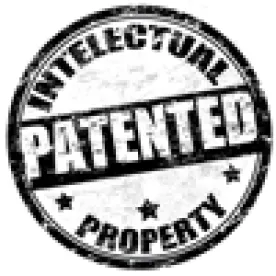On December 5, 2014, the Federal Circuit affirmed a district court’s decision that DDR Holdings’ system for generating composite webpages is patent eligible under Section 101. The patent claims at issue are directed to a system for generating composite webpages, which combine product information from third-party merchants with elements of a host website to preserve the “look and feel” of the host website. This system allows the host website to offer its customers products from outside sources, without forcing those customers to leave the host website. Representative claim 19 of U.S. patent No. 7,818,399 recites:
19. A system useful in an outsource provider serving web pages offering commercial opportunities, the system comprising:
(a) a computer store containing data, for each of a plurality of first web pages, defining a plurality of visually perceptible elements, which visually perceptible elements correspond to the plurality of first web pages;
(i) wherein each of the first web pages belongs to one of a plurality of web page owners;
(ii) wherein each of the first web pages displays at least one active link associated with a commerce object associated with a buying opportunity of a selected one of a plurality of
merchants; and
(iii) wherein the selected merchant, the outsource provider, and the owner of the first web page displaying the associated link are each third parties with respect to one other;
(b) a computer server at the outsource provider, which computer server is coupled to the computer store and programmed to:
(i) receive from the web browser of a computer user a signal indicating activation of one of the links displayed by one of the first web pages;
(ii) automatically identify as the source page the one of the first web pages on which the link has been activated;
(iii) in response to identification of the source page, automatically retrieve the stored data corresponding to the source page; and
(iv) using the data retrieved, automatically generate and transmit to the web browser a second web page that displays: (A) information associated with the commerce object associated with the link that has been activated, and (B) the plurality of visually perceptible elements visually corresponding to the source page.
Under the Alice/Mayo framework, the first step of a § 101 analysis is determining whether the claims at issue are directed to an abstract idea. The second step considers whether the claim limitations contain an “inventive concept” sufficient to “transform” the claimed abstract idea into patent-eligible subject matter.
The court began its analysis by listing some recent decisions, including Ultramercial v. Hulu, and summarizing the holdings of these decisions as stating that the patent-ineligible claims in those cases “were recited too broadly and too generically to be considered sufficiently specific and meaningful applications of their underlying abstract ideas. . . . [T]hese claims in substance were directed to nothing more than the performance of an abstract business practice on the Internet or using a conventional computer. Such claims are not patent eligible.”
Turning to the claims of the ’399 patent, in step one of theAlice/Mayo test, the court found that the claimed system was directed to an abstract idea, although the opinion noted that “identifying the precise nature of the abstract idea is not as straightforward as in Alice or some of our other recent abstract ideas cases.”
Applying step two of the Alice/Mayo test, the court found that the claims do not recite a “fundamental economic or longstanding commercial practice,” noting that the patent addresses a “business . . . challenge particular to the Internet.” However, the court cautioned that “not all claims purporting to address Internet-centric challenges are eligible for patent.” The claims at issue here “stand apart because they do not merely recite the performance of some business practice known from the pre-Internet world along with the requirement to perform it on the Internet.” DDR’s “claimed solution is necessarily rooted in computer technology in order to overcome a problem specifically arising in the realm of computer networks,” and “is not merely the routine or conventional use of the Internet.”
Accordingly, the court concluded that the claims of the ’399 patent “include ‘additional features’ that ensure the claims are ‘more than a drafting effort designed to monopolize the [abstract idea].’” In particular, the claims “recite a specific way to automate the creation of a composite web page . . . that incorporates elements from multiple sources in order to solve a problem faced by websites on the Internet.”
The court’s decision was not unanimous. Judge Mayer offered a strong dissent to the opinion, in which he referred to the claims as “no more than an abstract idea for increasing sales” implemented on a computer. Judge Mayer also takes issue with the test used by the court. Judge Mayer states that “Alicearticulated a technological arts test for patent eligibility,” and believes the DDR claims patent ineligible because they “[are] not rooted in any new computer technology,” and “they do not disclose any non-conventional technology for capturing the “look and feel” of a host website or for giving two web pages a similar appearance.”
For now, it appears that Internet-based business method patents that solve problems that arise from business or technological challenges particular to the internet may be patent-eligible. However, at least one commentator believes that this decision will not stand up to likely en banc or Supreme Court review. Inventors and practitioners looking for some concrete guidance in this area will have to wait a while longer.




 />i
/>i

